Deadly floods throughout history
Devastating floods that shocked the world
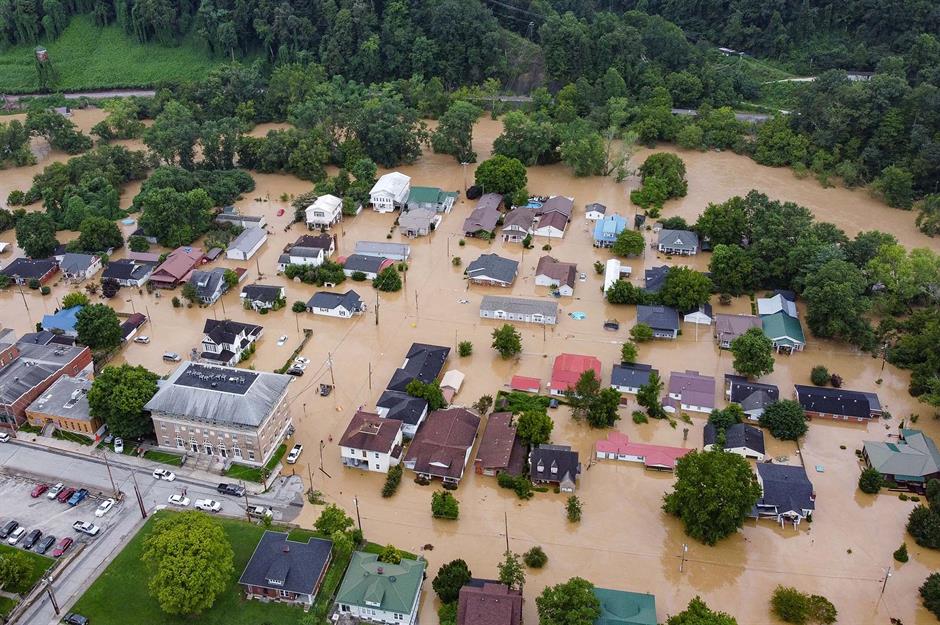
While water can be stunningly beautiful, it can also be extremely dangerous, as proven by the most extreme weather events around the world. Here we take a closer look at some of history's most deadly, dramatic and destructive floods, from 1900 to the present day devastation in Libya.
1900: Galveston hurricane, Texas, USA
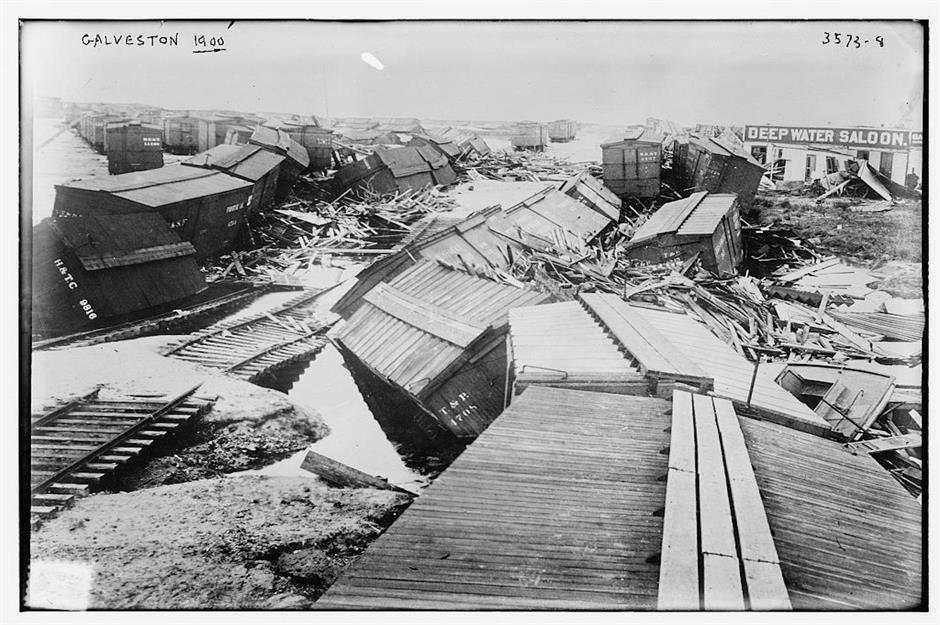
On 8 September 1900, a deadly Category 4 hurricane, with winds estimated to be up to 145 miles per hour (233km/h), tore through Galveston, in southeastern Texas. The hurricane triggered severe flooding, with angry waves pounding the little island city and leaving great swathes of it underwater.
1900: Galveston hurricane, Texas, USA
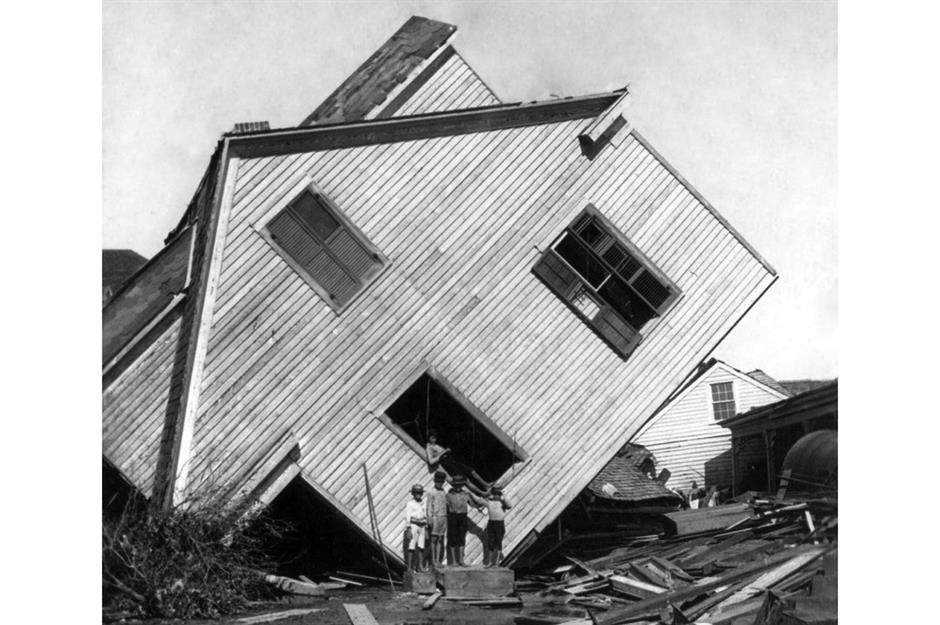
The damage was particularly severe since residents were caught unawares: US meteorologists had underestimated warnings from Cuba about the incoming storm and its direction. More than 3,600 buildings were destroyed and this photo shows a house on the city's Avenue N, uprooted by flooding and high winds. While the estimated death toll reported at the time was between 6,000 and 12,000, the exact number of lives lost remains unknown today. However, it's still often cited as the worst natural disaster in US history.
1910: Great Flood of Paris, Paris, France
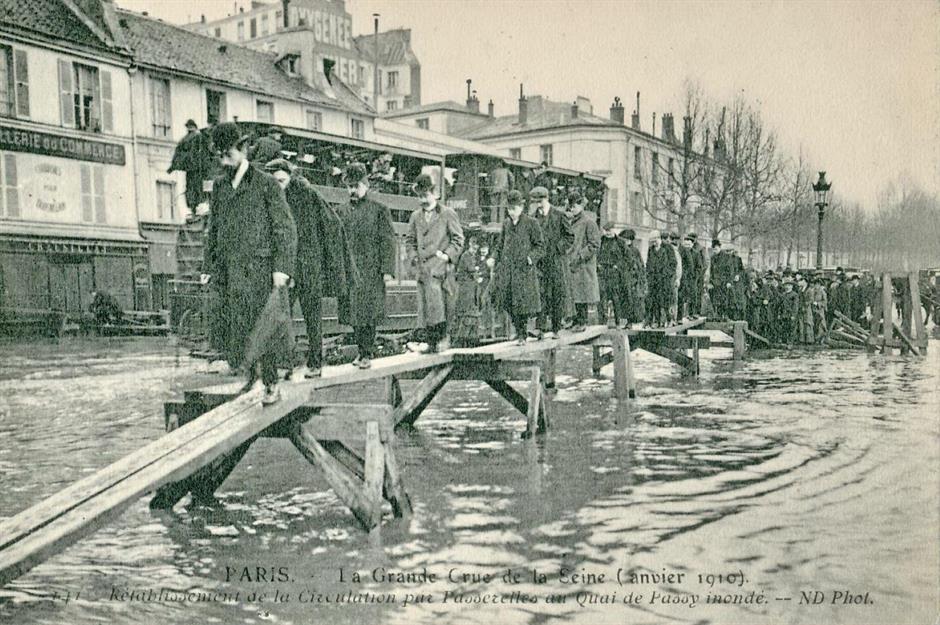
During the winter of 1909–1910, the French capital was battered by unusually heavy downpours, causing the Seine River's water levels to rise dramatically. They reached dangerous highs on 21 January 1910 and the river eventually broke its banks, causing catastrophic amounts of water to surge through the city. The powerful gushes overflowed Paris's metro tunnels and sewers leading to widespread damage.
1910: Great Flood of Paris, Paris, France
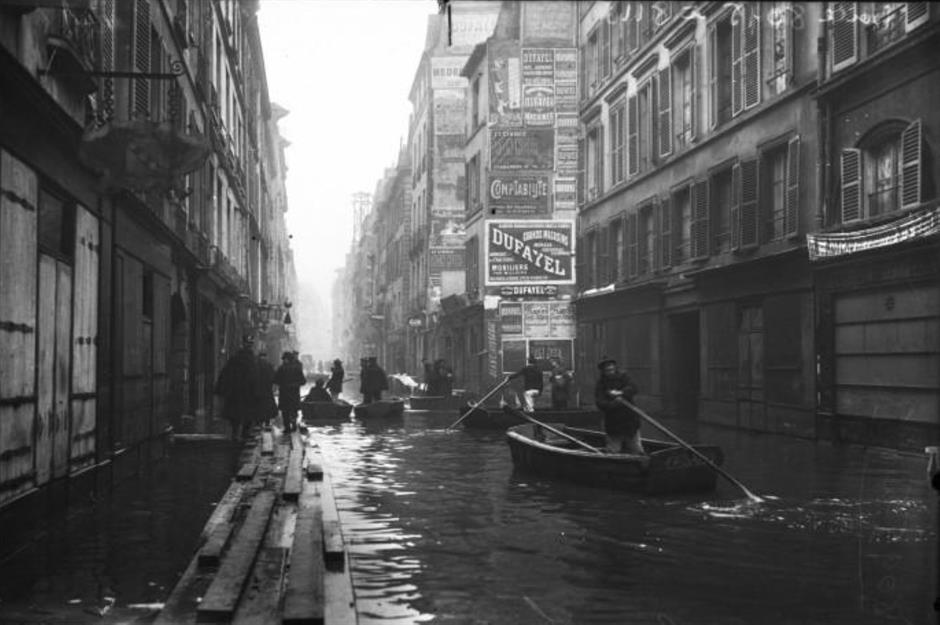
The destructive floods swamped the city for 35 days, forcing people to travel by boat or via temporary wooden walkways above the water. The disaster also cost over 400 million francs' worth of damage (around $1.1bn/€1bn/£904m at today's value). Only one death was recorded, though modern historians think there could well have been more.
1931: Central China Flood
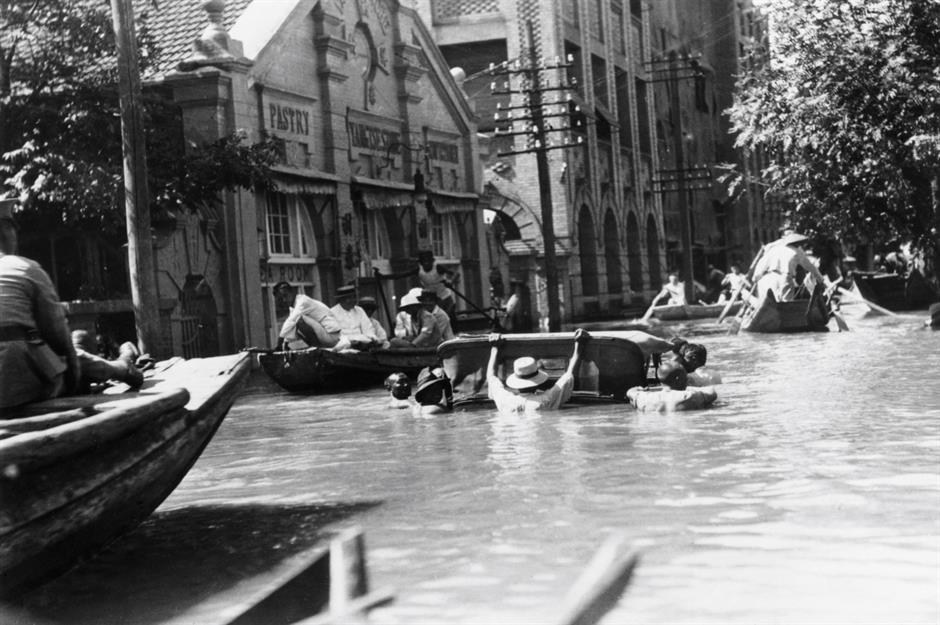
From July 1931, China experienced what's considered one of the most lethal natural disasters in modern history, when a series of devastating floods submerged the centre of the country. A combination of severe rainfall and a series of cyclones eventually caused the lower basin areas of the Yangtze river (the longest in Asia) and the Huai River to burst with deadly results.
1931: Central China Flood
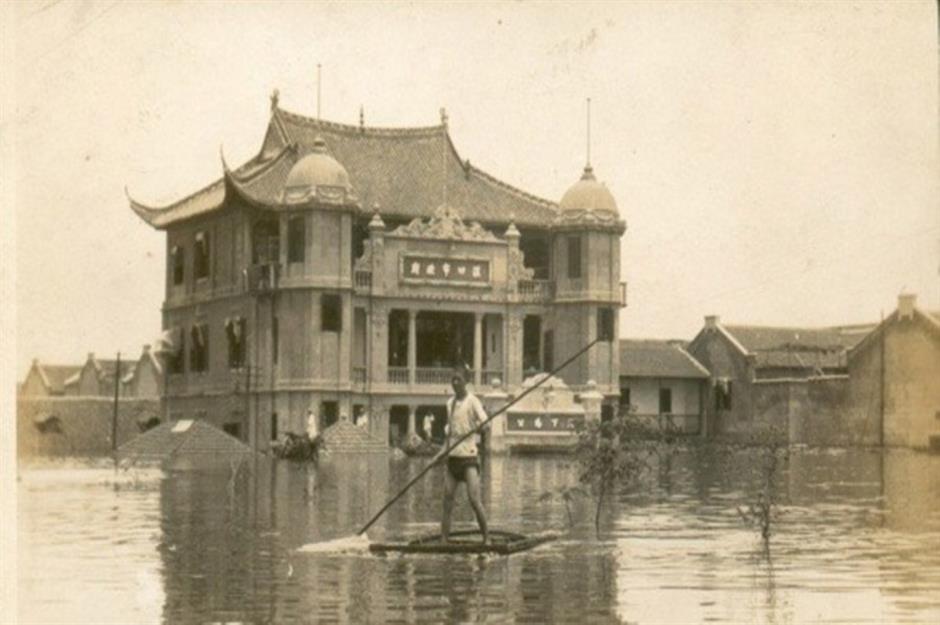
It's thought that around 52 million people were affected by the deadly waters, which smothered an area roughly the size of England and half of Scotland combined. The horrific death toll was incalculable – estimates ranged between 400,000 to four million people from flood-related deaths, as well as the widespread famine and disease outbreaks, including cholera and typhus, that occurred in the aftermath.
Follow our Facebook page for more news about the climate emergency
1953: North Sea flood, Europe
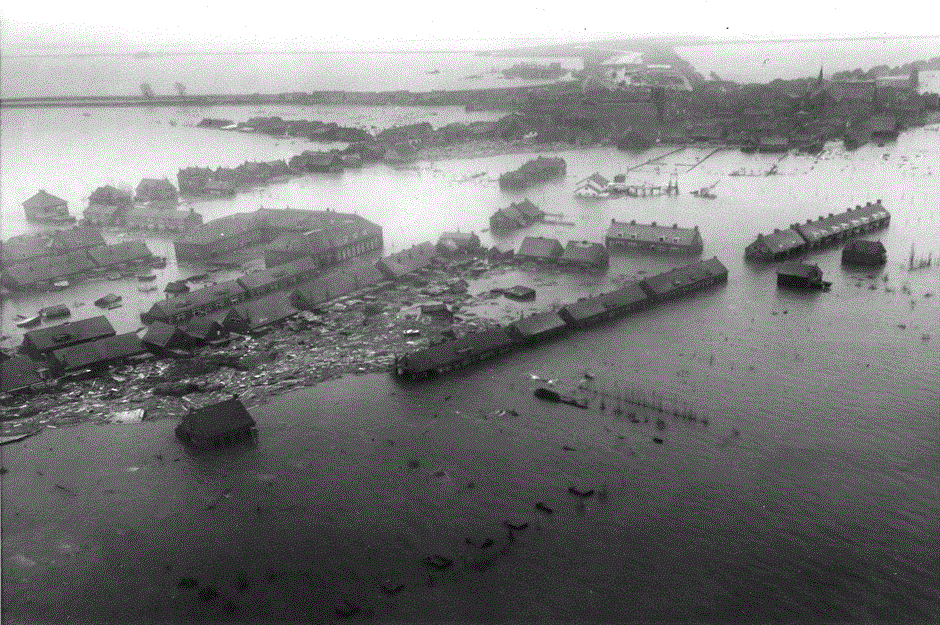
The North Sea’s worst storm on record surged through Europe on 31 January 1953. In the Netherlands the waters ploughed through 400,000 acres of land and killed at least 1,800 people. The sea in eastern England breached protecting walls and flooded 160,000 acres, while 133 people lost their lives when the ferry MV Princess Victoria sank in the North Channel.
1953: North Sea flood, Europe
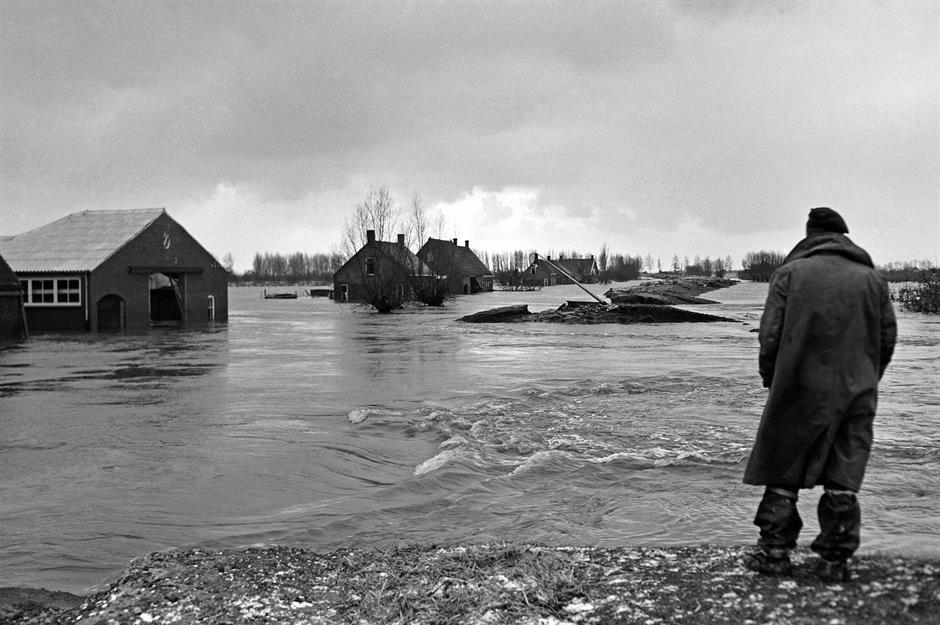
According to the UK Environment Agency, 307 people died in southeastern England, while it's estimated that 24,000 homes were destroyed. The county of Essex was especially hard hit losing 58 people at Canvey Island and 35 from the village of Jaywick alone. It was Britain's worst natural disaster of the 20th century.
1966: Arno river flood, Florence, Italy
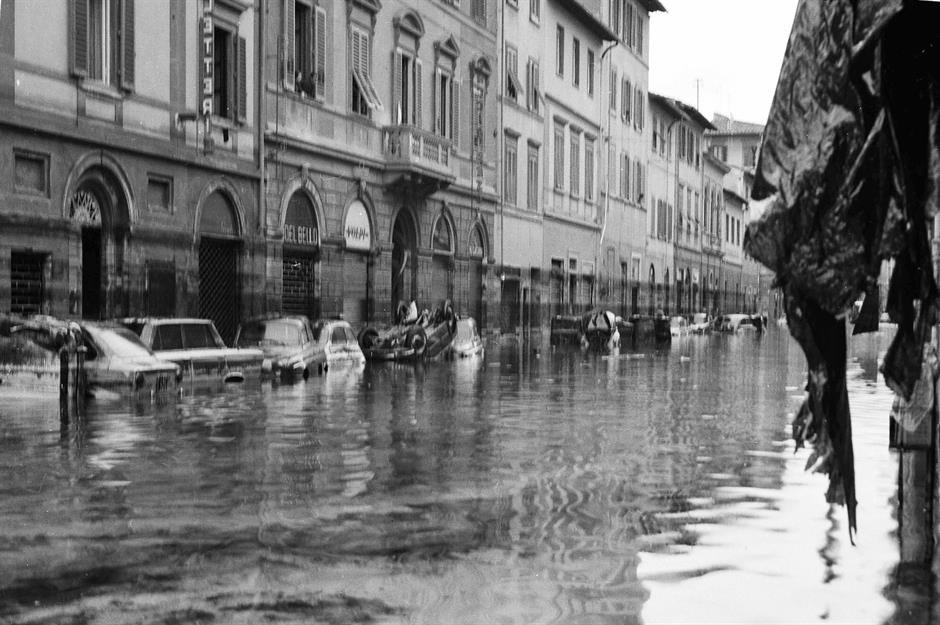
On 4 November 1966, following heavy rainfall, the banks of the Arno river dramatically swelled and water flooded through Florence’s city centre. The floodwaters submerged the streets and overflowed sewers, carrying waste and debris through one of Italy's most important historic cities.
1966: Arno river flood, Florence, Italy
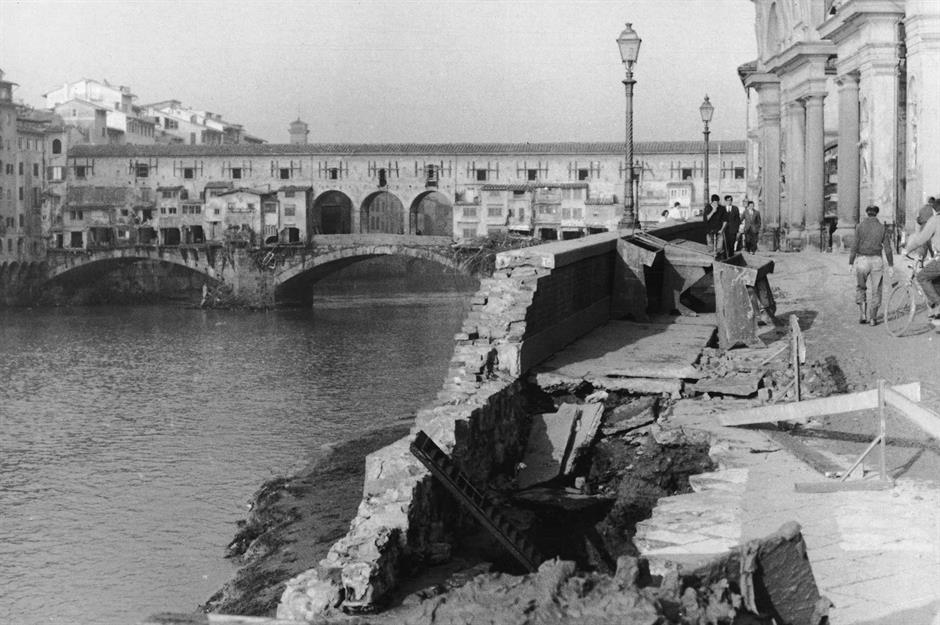
The powerful floodwaters – which were as high as 22 feet (7m) in parts according to some reports – killed at least 35 people and severely damaged buildings and homes, leaving thousands without power. Treasured artworks and manuscripts from the Uffizi Gallery were also badly water-damaged, and residents and tourists took to the flooded streets to help salvage the priceless pieces.
1993: Great Flood, Midwest, USA
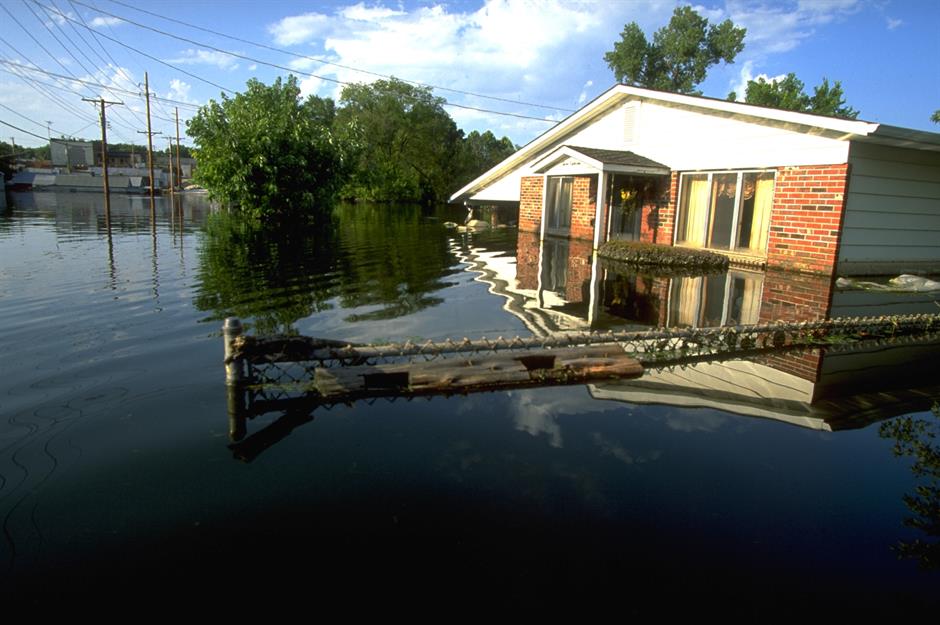
During the summer of 1993, the Mississippi and Missouri Rivers overflowed causing catastrophic damage and destruction across the Midwest. Ongoing storms, coupled with abundant rain and snow during the previous autumn and winter, were believed to have been the root cause. More than 17 million acres of land were flooded over three months, with nine states affected. (These were Illinois, Wisconsin, Missouri, Iowa, Minnesota, Kansas, Nebraska, South Dakota and North Dakota).
1993: Great Flood, Midwest, USA
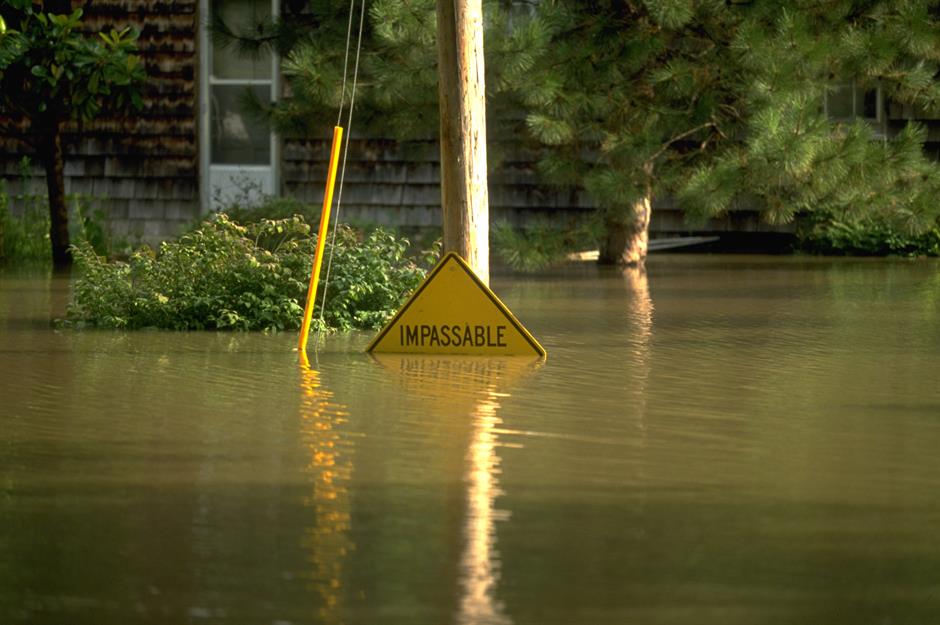
Hundreds of levees along the rivers failed and burst, forcing thousands across the country to evacuate. The waters claimed at least 50 lives and destroyed roughly 10,000 homes. Millions of acres of Midwestern farmland were also submerged and remained unusable in the years that followed. The Great Flood was one of the deadliest and most expensive river floods to occur in the US, costing an estimated $15 billion in damages at the time, about $26 billion (£20bn) today.
1999: Vargas tragedy, Venezuela
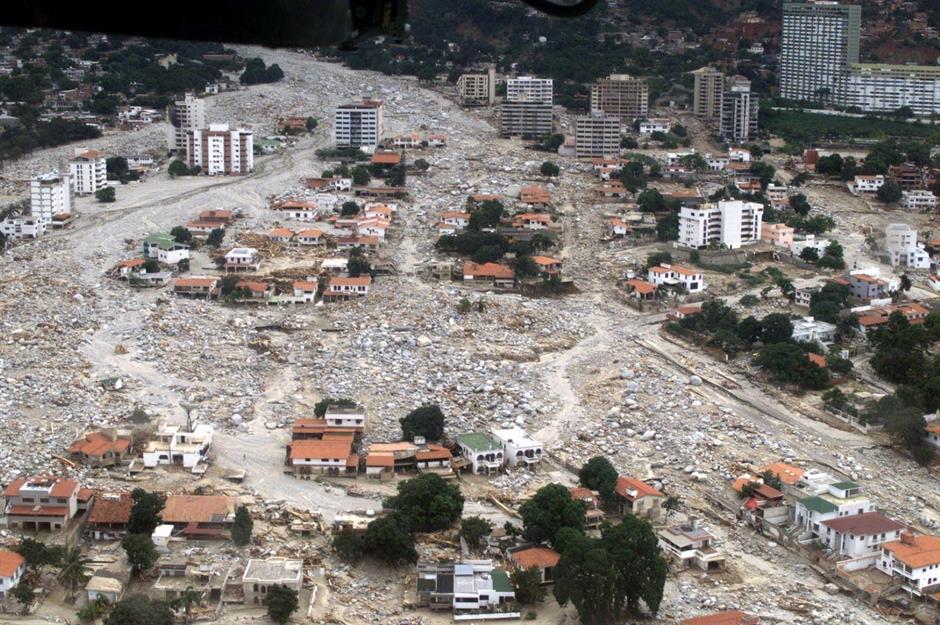
On 14 December 1999, torrential rain triggered flash floods that swept over the coastal area of Vargas State in Venezuela. The flooding sparked deadly mudslides, including water, debris and boulders, which destroyed the town of Caraballeda. Death tolls were estimated at between 10,000 and 30,000 people across the region.
1999: Vargas tragedy, Venezuela
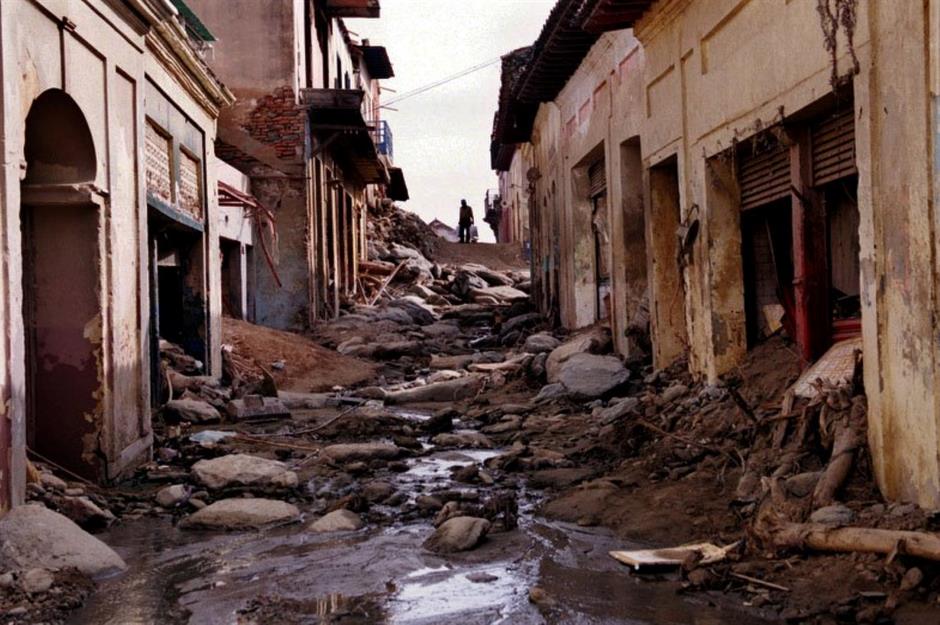
Over just a few days, a devastating 60 mile (100km) stretch of the Vargas state coastline was completely devastated. The Vargas tragedy remains Venezuela’s worst modern-day natural disaster.
2002: European flooding
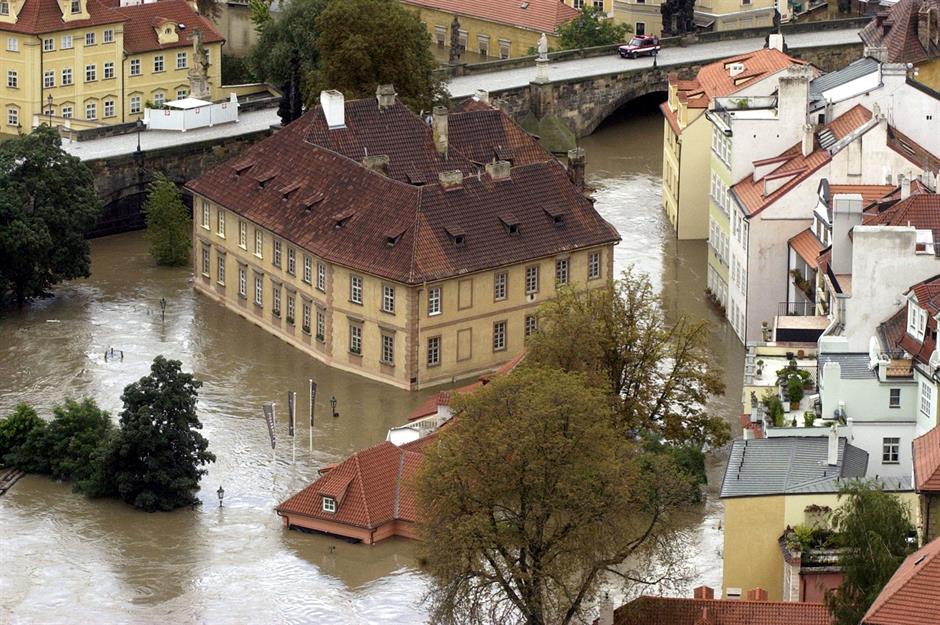
Destructive heavy rainfall swept across Europe in the summer of 2002, leading to catastrophic flooding. Germany, Austria, Russia and the Czech Republic were among the countries most affected by the dramatic weather event, with Prague (pictured here) experiencing some of the worst damage of all.
2002: European flooding
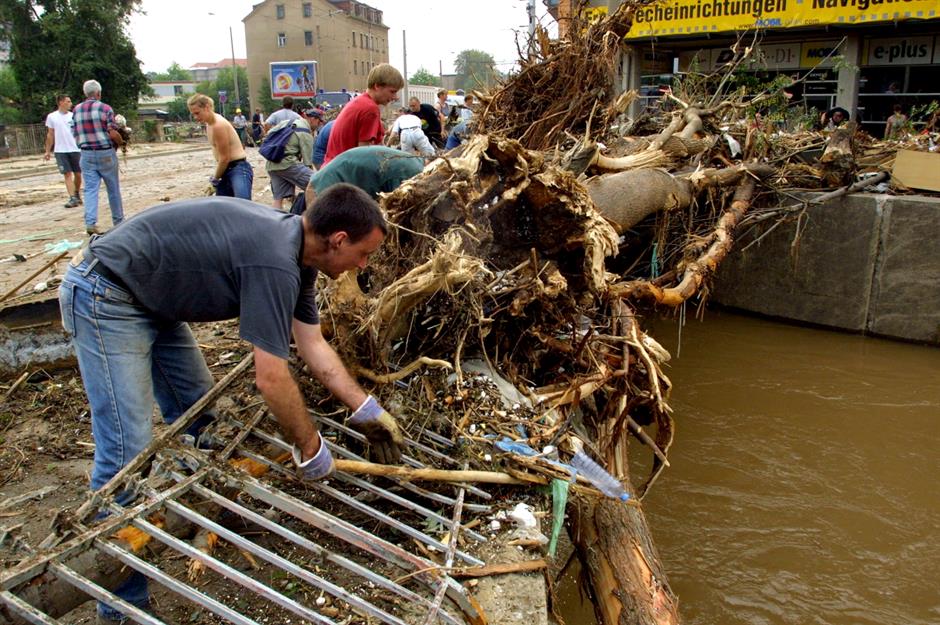
Receding waters from the Vltava river engulfed Prague's buildings and displaced at least 45,000 residents from their homes. It's thought that the floods claimed 110 lives in total. The cost of water damage throughout the affected countries was also estimated to be around €15 billion (£12.8bn) at the time.
2010: Yangtze river floods, China
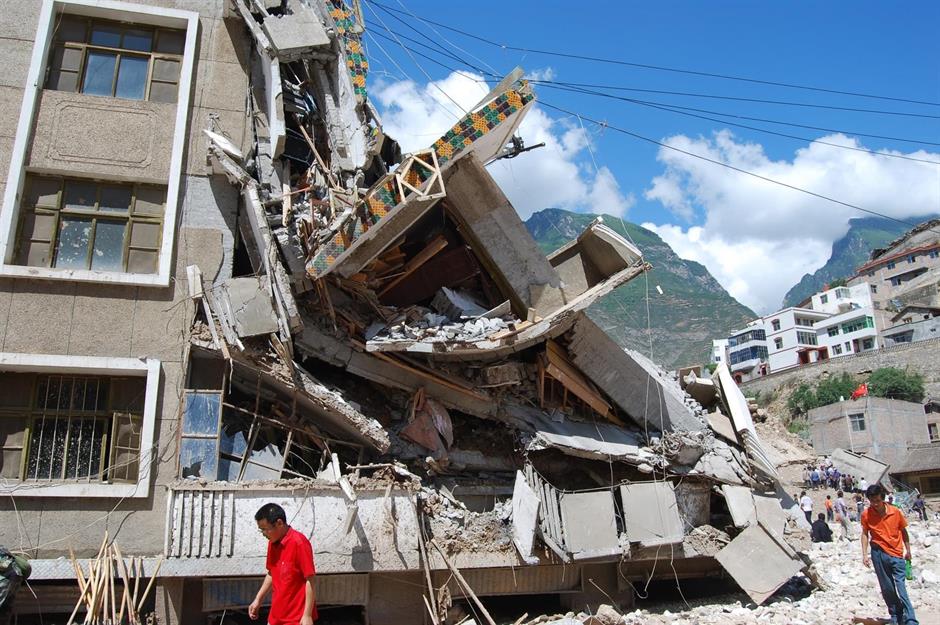
After non-stop rainfall, the Yangtze river swelled again in early May 2010, triggering catastrophic floods and causing deadly quantities of water to wreak havoc throughout South and Central China. The floods and the subsequent landslides are likely to have claimed over 1,000 lives, the worst death toll that the country had experienced in a decade.
2010: Yangtze river floods, China
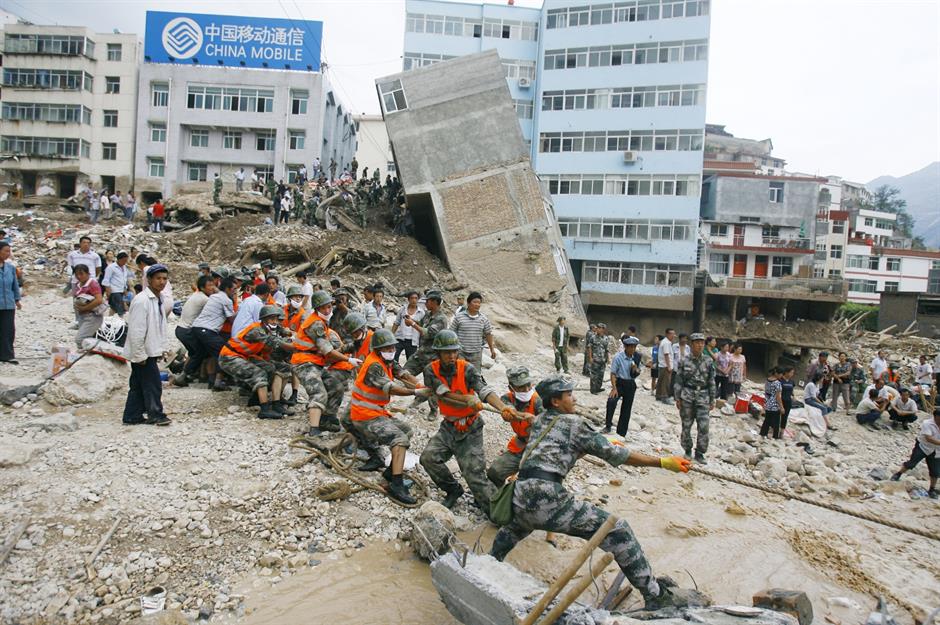
Hundreds of thousands of homes were destroyed thanks to waters that reached a staggering flow rate of up to 70,000 cubic metres per second. It's one of the world's most costly floods, with damages estimated at $31.1 billion (£24bn) according to figures from 2014.
2010-2011: Heavy rainfall, Queensland, Australia
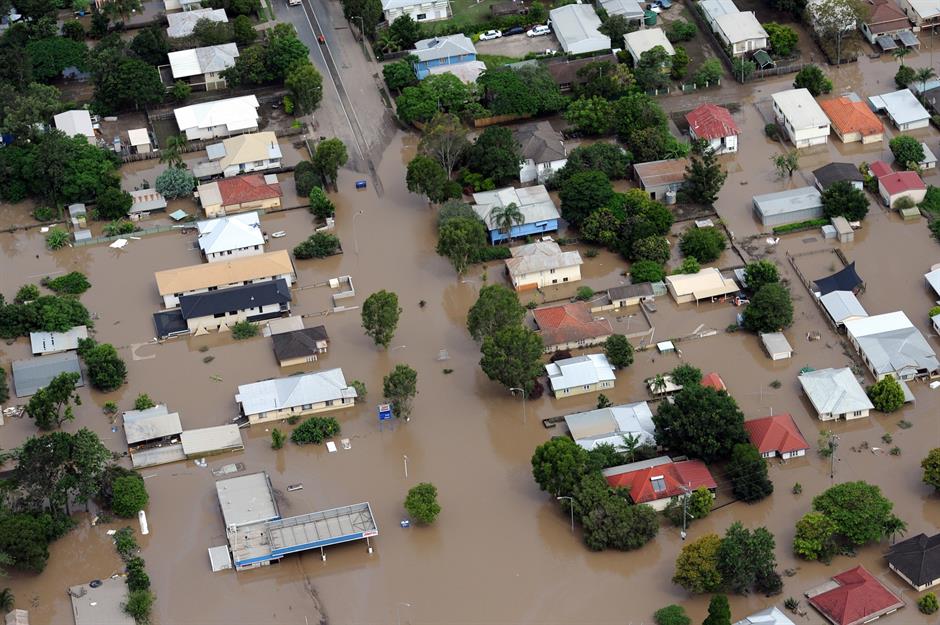
Some of the worst flooding in Australia’s history overwhelmed the state of Queensland in November 2010. A combination of unusually heavy rainfall and strong La Niña winds caused monsoon waters to drench the state. Total rainfall was in the range of 16 to 24 inches across the majority of Queensland's east coast, with some areas seeing record-breaking levels.
2010-2011: Heavy rainfall, Queensland, Australia
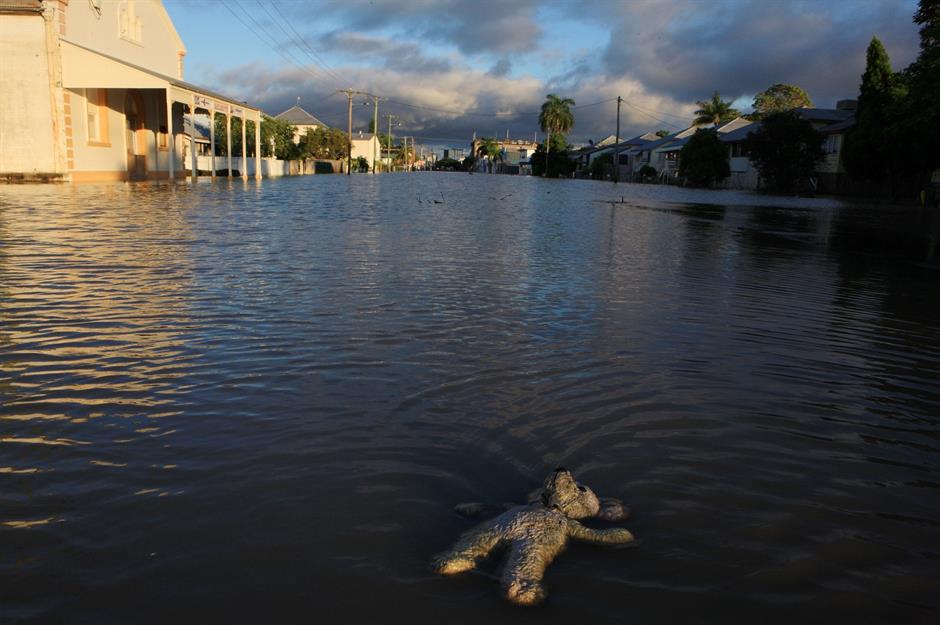
Thousands of people were forced to flee their homes and at least 22 towns were estimated to have been completely inundated by the intense waters. Roughly 200,000 people were affected and 33 were killed by the extreme weather. Around $440 million AUD ($315m USD/£243m) were spent on the recovery effort alone.
2013: Monsoon, North India
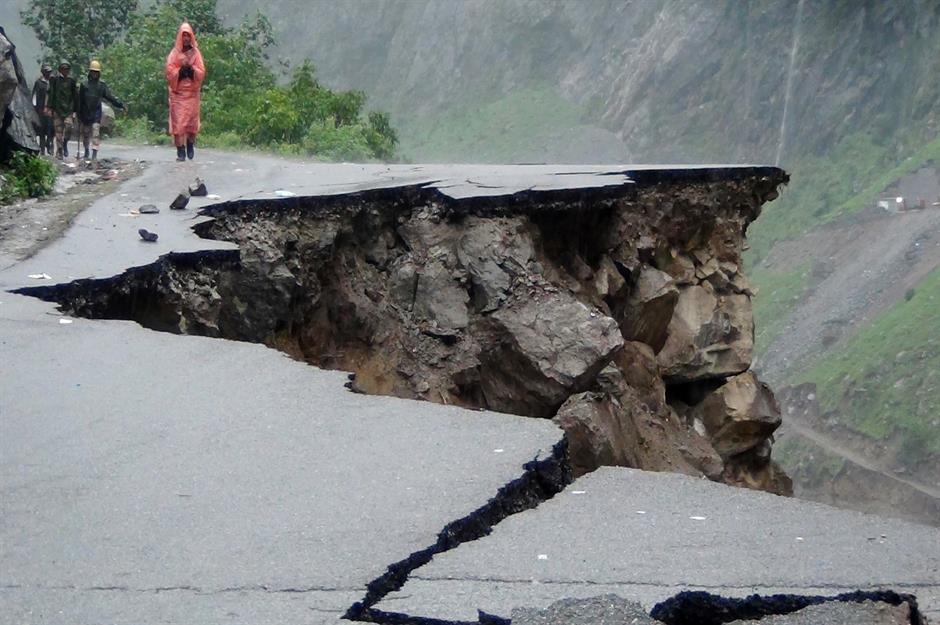
In June 2013, the worst disaster since the 2004 tsunami hit North India and Nepal, after heavy monsoon rains triggered both flooding and landslides across the region. Around 5,700 people were reportedly killed and over 60,000 were left stranded as the rainfall swamped cities, washed away cars and blocked roads. Entire villages were completely obliterated by the extreme events.
2013: Monsoon, North India
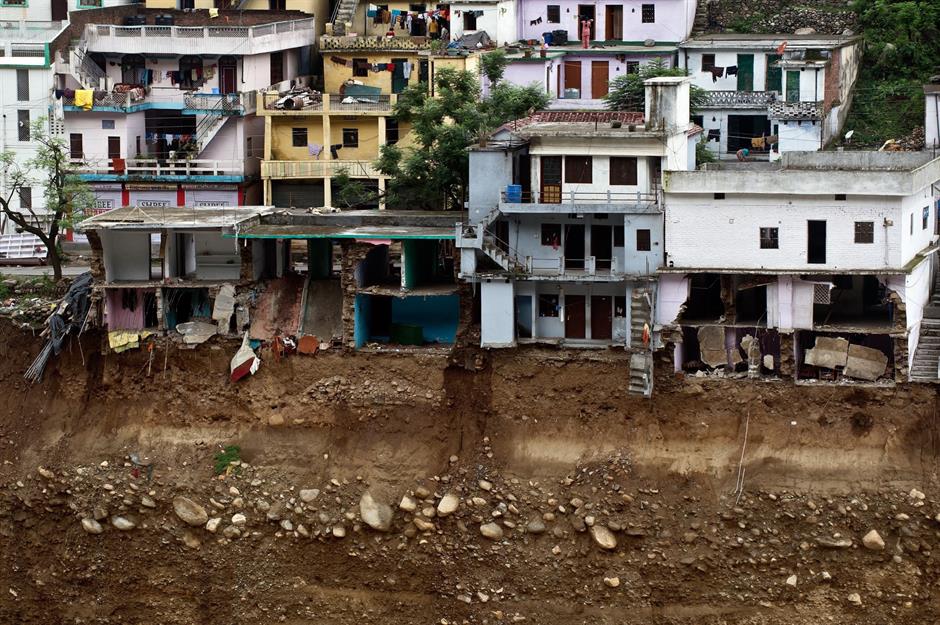
Over 4,000 villages and towns in the state of Uttarakhand were affected and more than 100,000 people were forced to flee from the devastation. Thousands were also declared missing as many were trapped in the nearby valleys awaiting rescue teams, which were blocked by the landslides. Although the heavy rain lasted a matter of days, the damage was so catastrophic that it took Uttarakhand years to recover.
2014: Monsoon, India and Pakistan
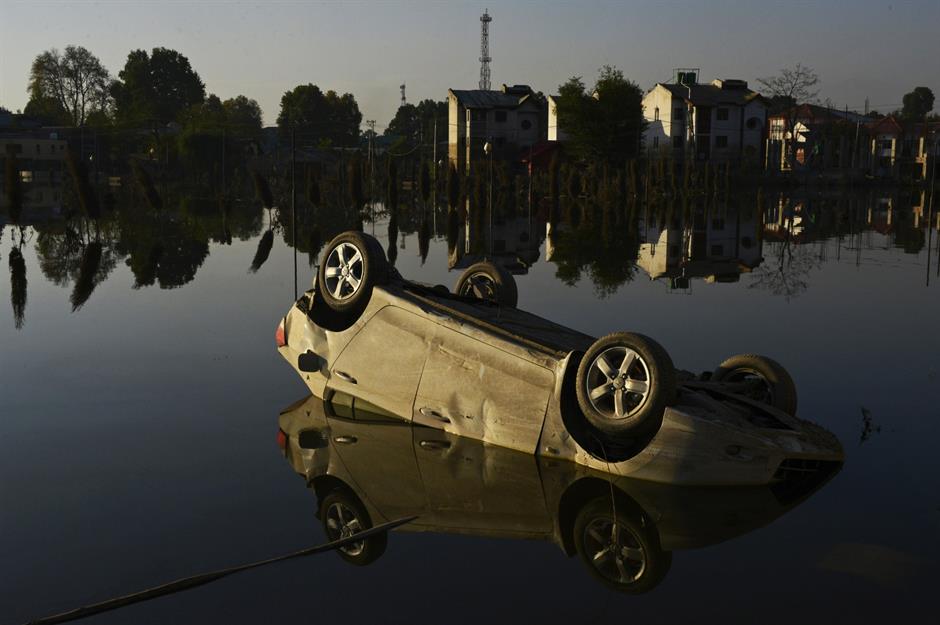
Both Pakistan and India were hit by powerful monsoon rainfall during September 2014. The historic flooding was the worst the region had experienced in 60 years, trapping thousands and killing hundreds in both countries as buildings and roads were swept up and submerged by the powerful currents.
2014: Monsoon, India and Pakistan
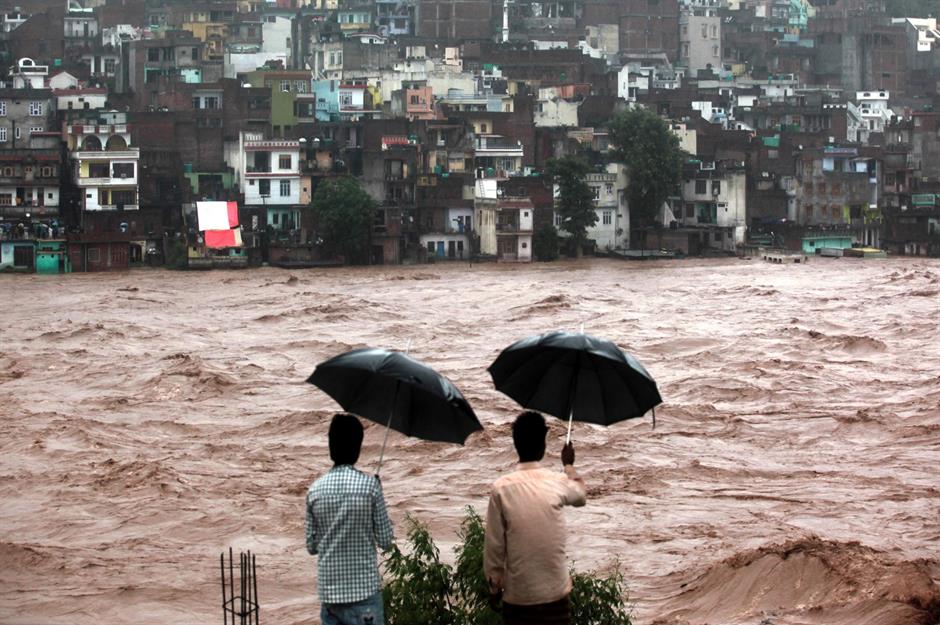
Roughly 80,000 people had to be evacuated or rescued from the ravaged areas until the waters finally subsided in late September. As the catastrophic floods ripped through over 4,000 villages, 2.5 million people were affected.
These are the world's most dramatic weather events since 1900
2018: Heavy rainfall, Kerala, India
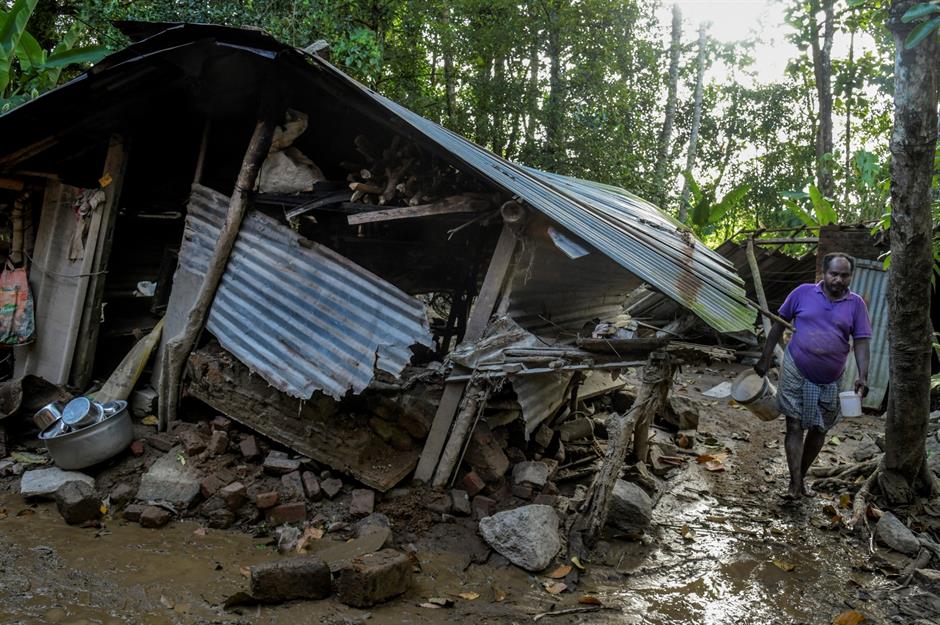
Between July and August 2018, Kerala, one of India’s southern states, experienced its worst floods since 1924. The region is home to 44 rivers, and is used to intense rainfall during its two monsoon seasons. However, in 2018, vast amounts of rain fell during a significantly shorter period than normal, causing destructive landslides.
2018: Heavy rainfall, Kerala, India
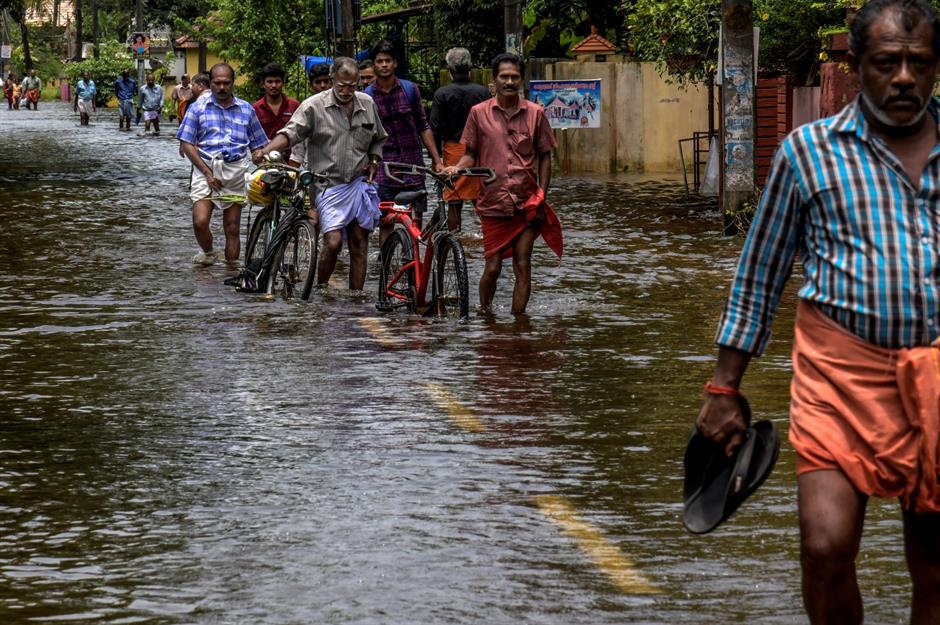
The flooding and mudslides swamped 13 out of 14 of Kerala's districts, killing at least 400 people in flood-related incidents and displacing thousands. The cost was an estimated 400 billion rupees ($5.6bn/£4.3bn) in damages.
2019: Acqua alta, Venice, Italy

Venice's residents are used to the "acqua alta" (high waters), but 15 November 2019 saw the highest tide in more than 50 years, submerging the tourist hotspot. The floods were exacerbated by a southern wind that pushed water up the Adriatic into the Venice lagoon and water levels peaked at six feet (1.8m), the highest since 1966 when they reached up 6.3 feet (1.94m). Wooden platforms were built for residents and tourists to travel across the city as, according to officials, more than 85% of Venice was flooded.
2019: Acqua alta, Venice, Italy
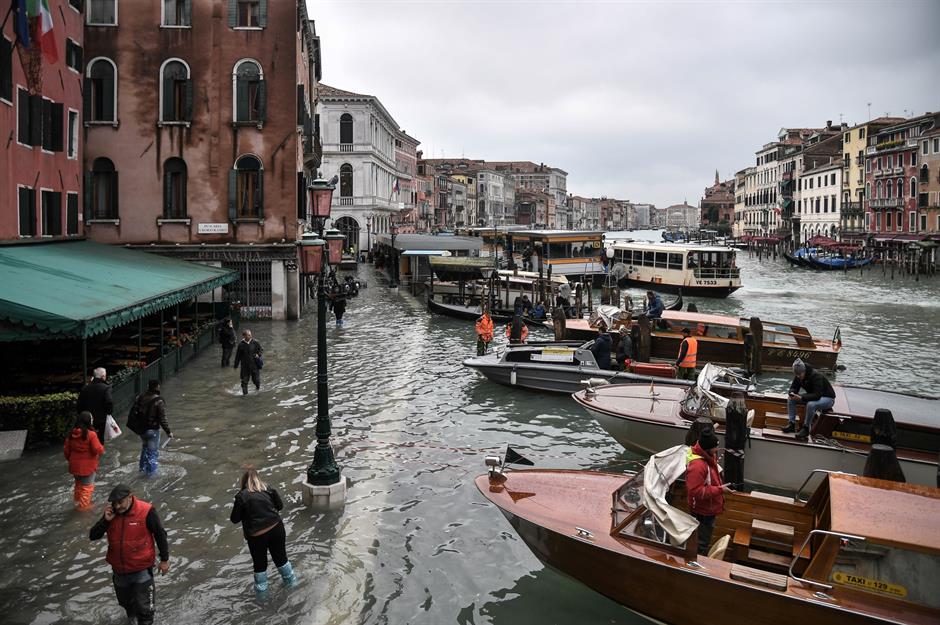
At least two people died and authorities voiced fears that, since Venice continues to sink as water levels rise each year, more and more local residents will choose to relocate. The flood damage was estimated to be hundreds of millions of euros as the city and its inhabitants struggled to cope with the sheer scale of the water.
2020: Yangtze floods, China
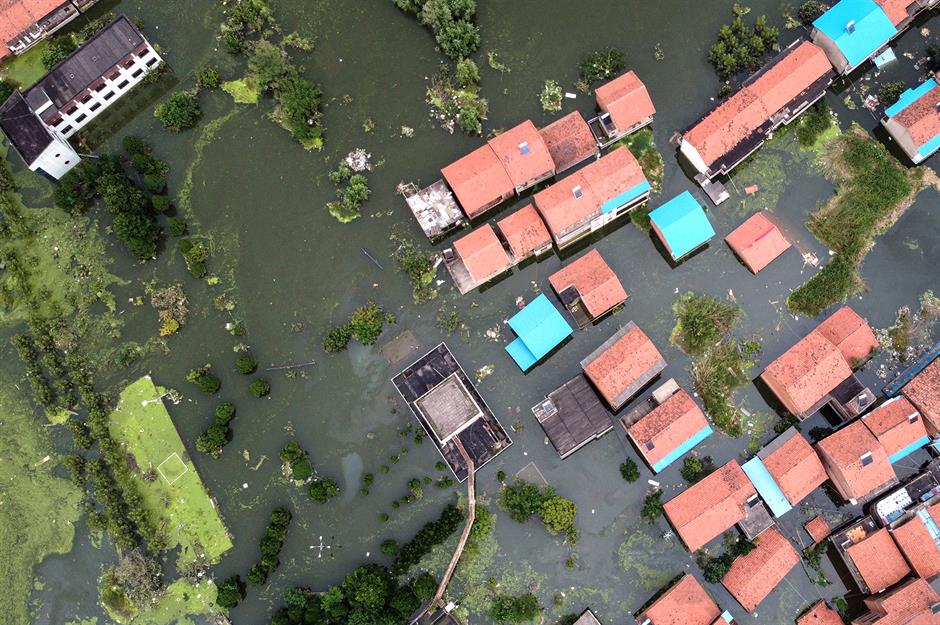
In 2020, southern China experienced some of its worst flooding in decades, after weeks of torrential rain through June and July. Vast populations along the Yangtze, the longest river in Asia, were forced to evacuate as the mighty waterway overflows and dams fail. This photo, taken on 18 July 2020, shows residential areas submerged in water in the city of Jiujiang, in China’s Jiangxi province.
2020: Yangtze floods, China
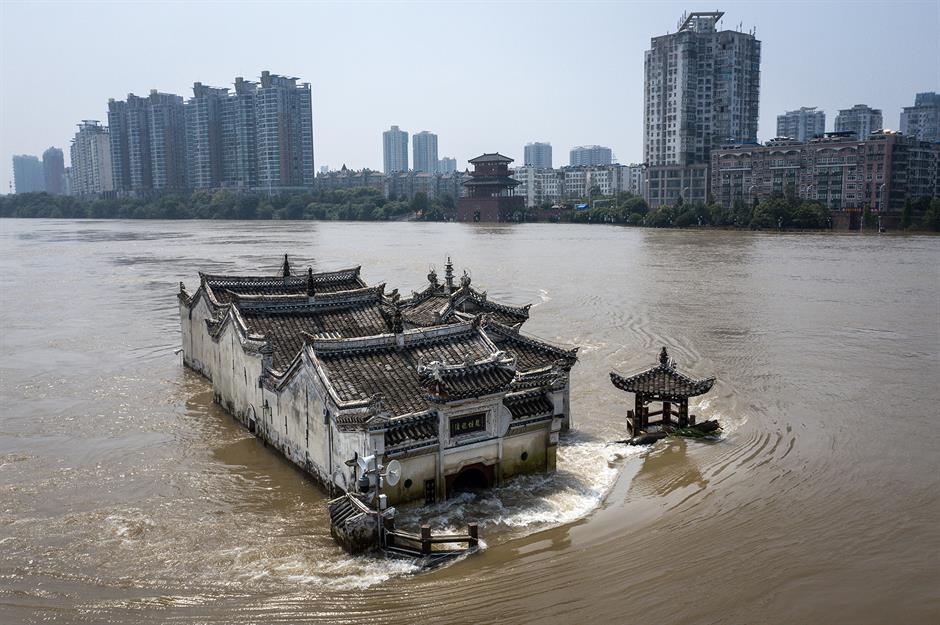
Reports at the time estimated that at least 158 people were either dead or missing as a result of the floods. It's also thought that some 3.7 million people were displaced, and more than 40,000 homes were destroyed. However, some experts fear that the worst is yet to come: it’s thought that the enormous Three Gorges Dam reservoir could soon reach capacity, which would lead to further devastation. This dramatic photo shows Wuhan’s historic Guanyin Temple engulfed by the swollen Yangtze river.
2021: Germany and Belgium floods
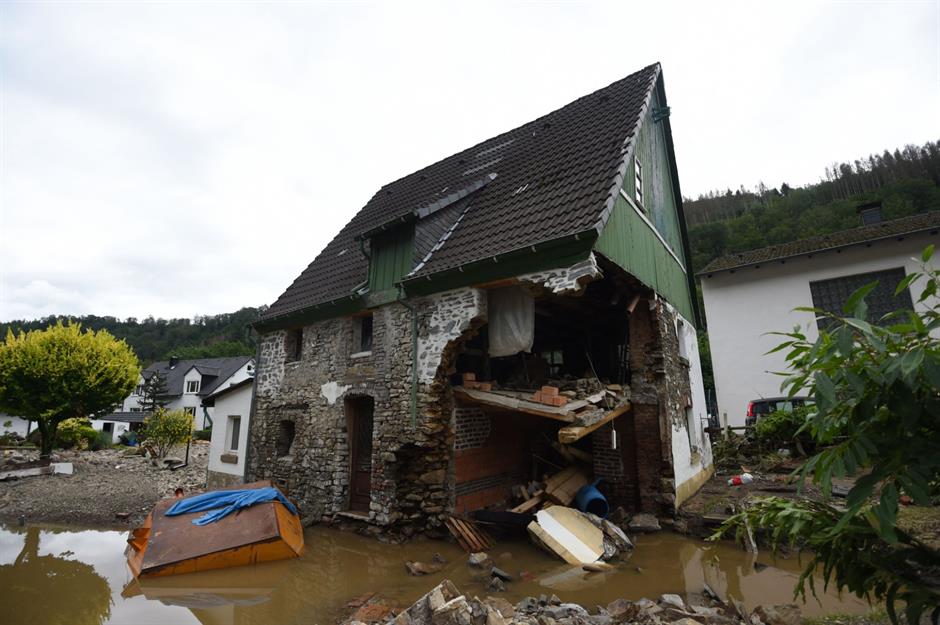
In July 2021, shocking images emerged of widespread flooding in Germany and Belgium. A large area of the Rhine region experienced record-breaking rainfall on Wednesday 14 July: parts of North Rhine-Westphalia and Rhineland-Palatinate saw 32.6 gallons (148 litres) of rain in just 48 hours. For context, the region normally has 17.6 gallons (80 litres) in the whole of July.
2021: Germany and Belgium floods
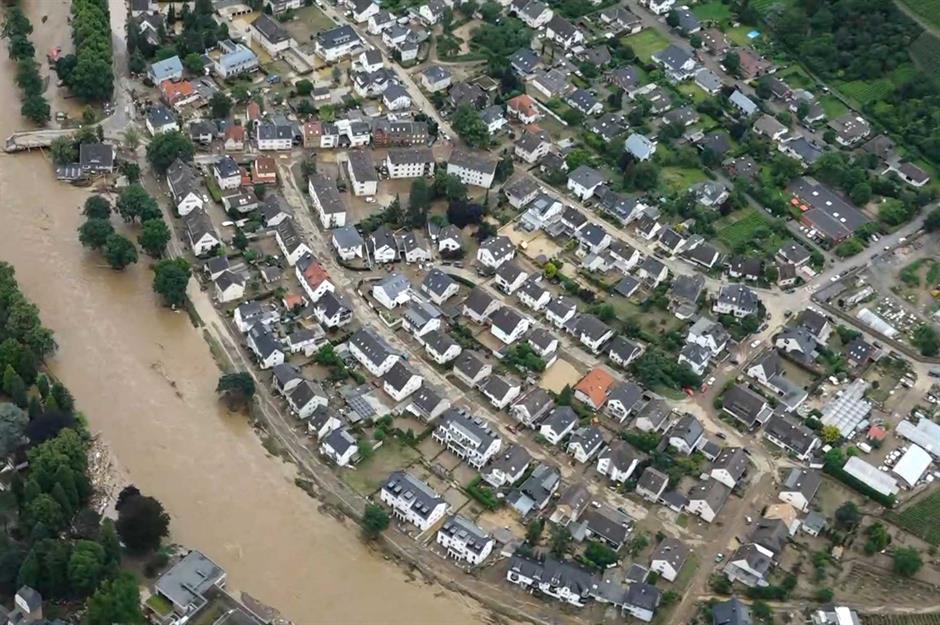
As of 22 July, at least 205 people had died – 173 in Germany and 32 in Belgium. Rivers burst their banks and swept up buildings, while mobile phone networks failed and making contact with those unaccounted for became impossible. The spa town of Bad Neuenahr- Ahrweiler, pictured, was one of the most badly affected areas with housing engulfed and a road bridge collapsing. Scientists and politicians in Germany said the flooding is a direct result of the climate emergency.
2021: Henan province floods, China

Beginning on 17 July 2021, China’s Henan province was hit with heavy rainfall which caused reservoirs to overflow, leading to flooding in Zhengzhou and other parts of the province. In fact, there was a year’s worth of rainfall in just three days. Shocking images emerged showing commuters stuck on a subway train, where water burst through and filled carriages. Some 500 passengers were trapped, according to local media.
2021: Henan province floods, China
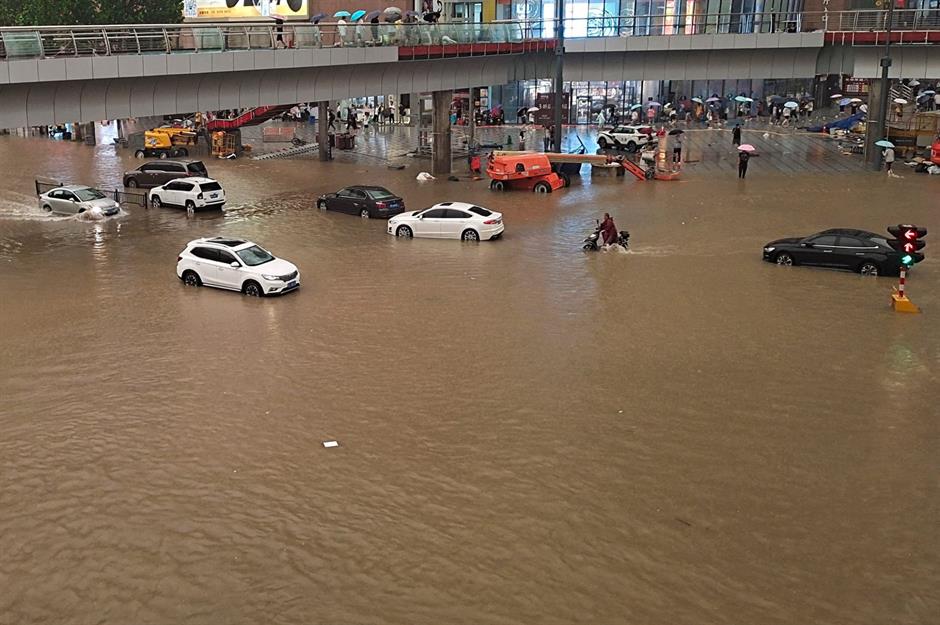
At the height of flooding, some 200,000 people had to be moved to temporary shelters. In Zhengzhou, which is on the banks of the Yellow River and has a population of 12.6 million, the First Affiliated Hospital briefly lost power on 20 July and 600 patients in critical condition had to be moved to another location. A report published in January 2022 found that 398 people had died as a result of the floods.
2022: Quito Landslide, Ecuador
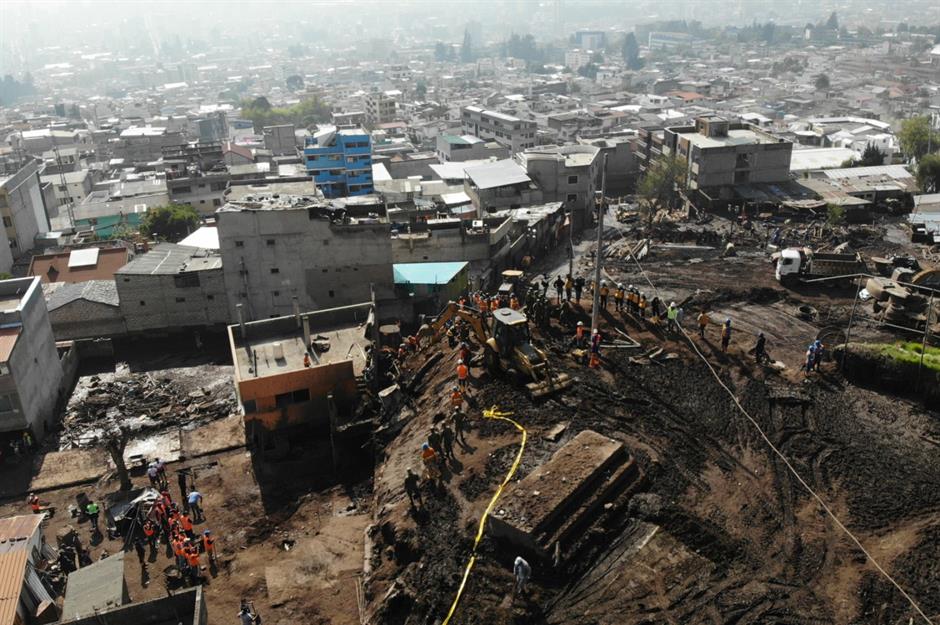
At the beginning of February 2022, Ecuador’s capital was blasted with more rainfall than it had experienced in almost two decades. The torrential downpour triggered a landslide as rocks and mud were carried down the Pichincha volcano. Quito, located on its eastern slopes, was directly in the firing line and streets were filled with waves of mud up to 10 feet (3m) high, while cars were swept away and houses became flooded.
2022: Quito Landslide, Ecuador
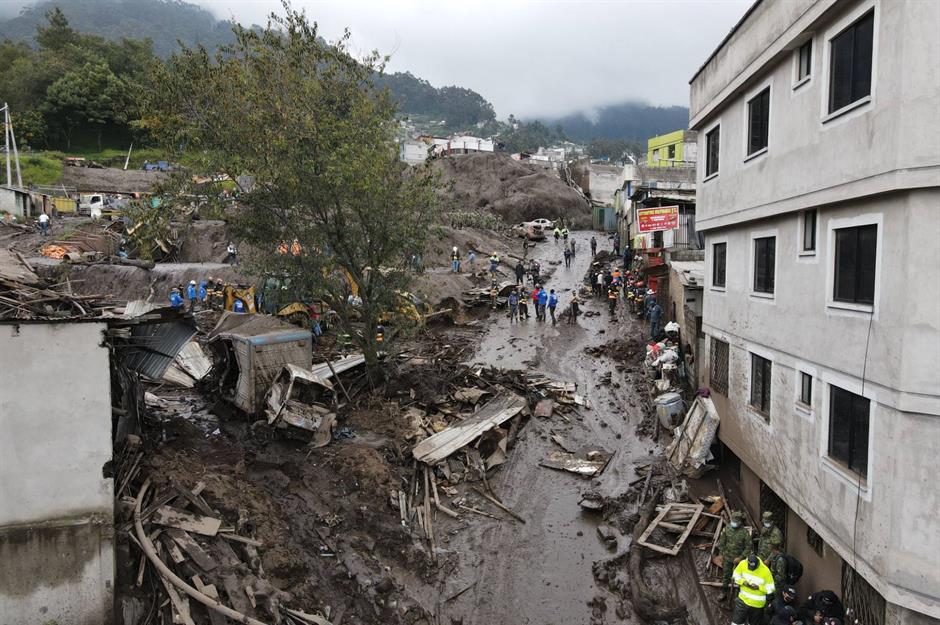
At least 24 people have been killed, with 47 people injured and at least 20 said to be missing. Large parts of the city have been left without electricity after poles were dragged down by the landslide, while many residents have been moved to emergency shelters. According to Quito mayor Santiago Guarderas, the soils had become saturated with water after the intense rainfall, which triggered the landslide.
These are the world's landmarks most at risk from climate change
2022: Eastern Australia floods
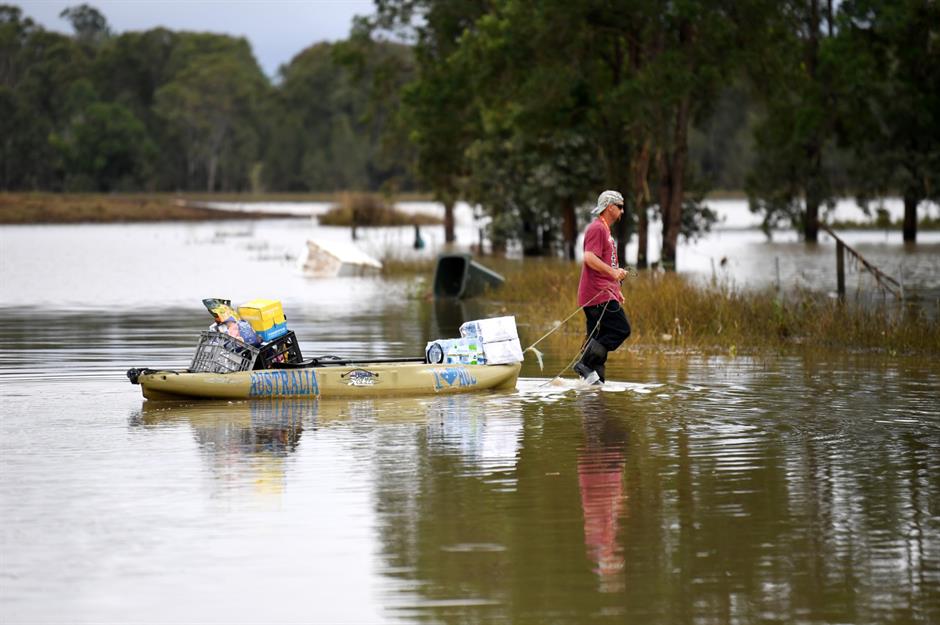
On Monday 28 February, a shocking 700mm of rain fell in a 30-hour period across the east coast of Australia, devastating southern Queensland and northern New South Wales. The unprecedented weather, which was dubbed a ‘rain bomb’ by politicians, led to brutal flooding which has killed at least 17 people to date. Thousands of properties have been flooded and large parts of Brisbane, Australia’s third most populous city, were submerged.
2022: Eastern Australia floods
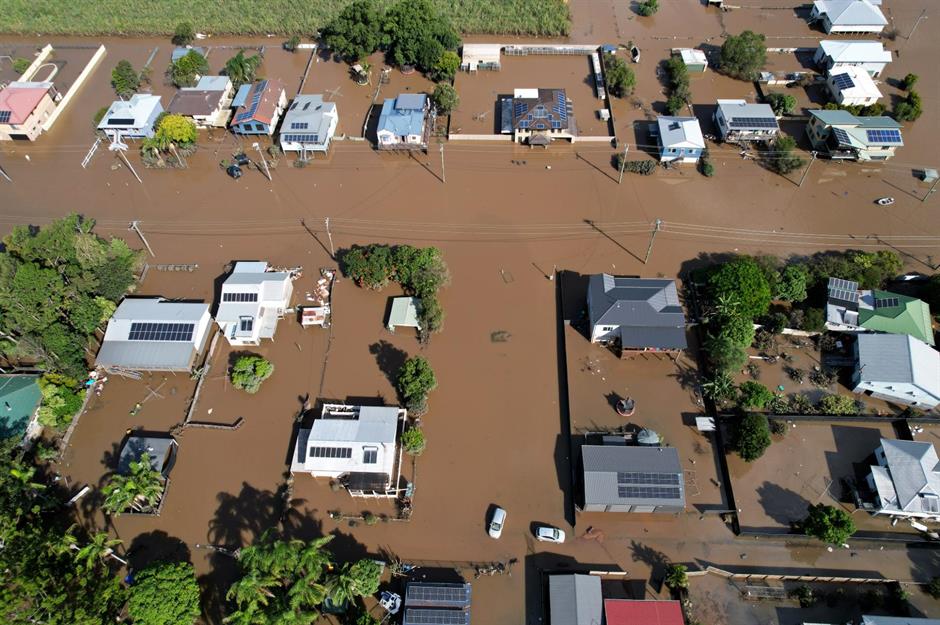
Yet the catastrophic weather, coined a “one-in-a-1,000-year” event by NSW premier Dominic Perrottet, was amplified by climate change. The rain bomb, caused when an ‘atmospheric river’ formed in the skies above eastern Australia and resulted in heavy rainfall, is still being fervently discussed by climate scientists. Yet rising temperatures and an increased amount of CO2 in the atmosphere have increased the amount of moisture that can be held up there, meaning events like these floods could become more frequent and intense in decades to come.
2022: Cuba floods
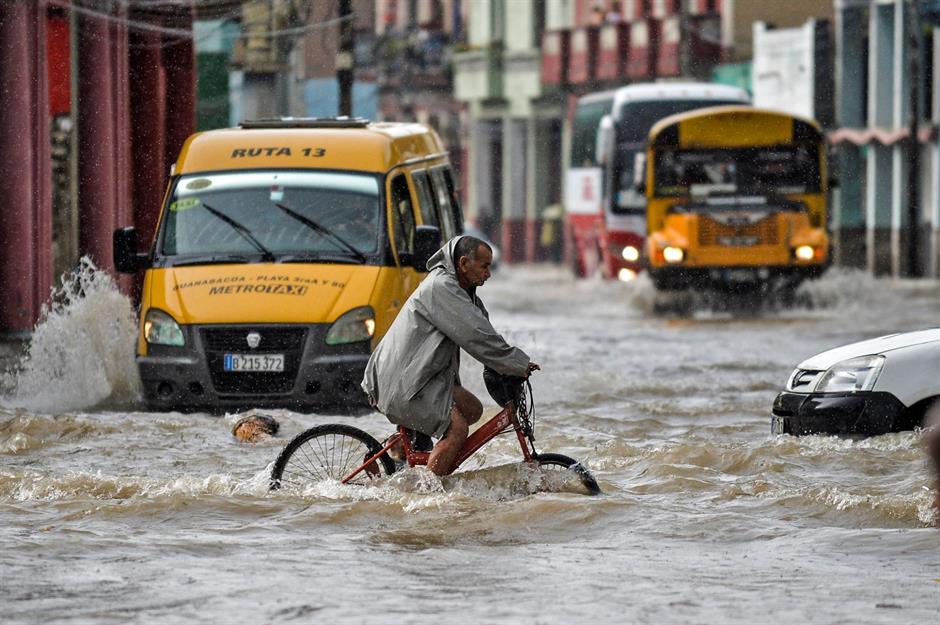
From 2 to 3 June, heavy rain fell across swathes of western and central Cuba, resulting in deadly floods which are known to have killed at least two people. In Havana, almost 2,000 residents were forced to leave their homes and some 50,000 people in the surrounding area were left without an electricity supply. The intense rainfall was linked to Hurricane Agatha, which swept through southern Mexico before hitting the Caribbean island.
2022: Cuba floods
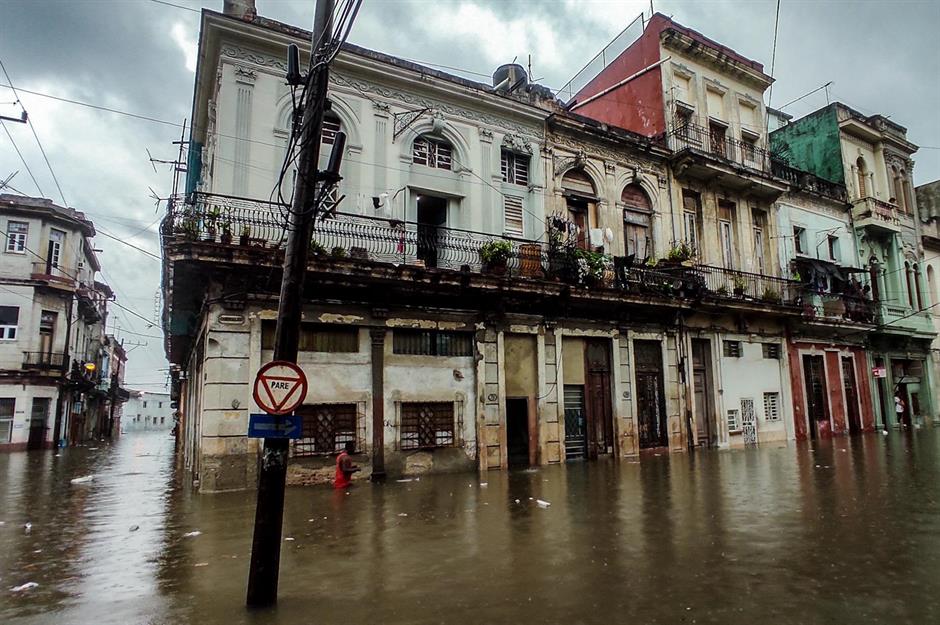
The streets of the capital, which are famous for their frozen-in-time 1960s appeal, became filled with murky water which was "almost waist-deep", according to Luis Antonio Torres, first secretary of the Communist Party of Cuba (PPC) in Havana. Although the island often experiences hurricanes during the rainy season, climate change is making these events more frequent and severe.
2022: Kentucky floods, USA
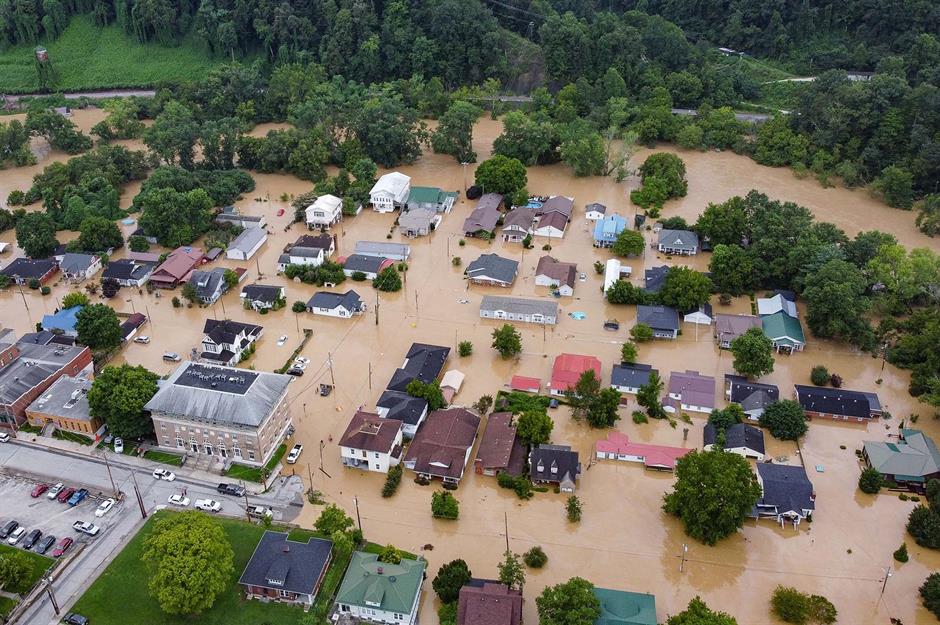
Devastating floods swept across Kentucky, US in late July, killing at least 39 people and causing catastrophic damage. The Appalachia region of eastern Kentucky was the worst hit, with President Joe Biden declaring it a "major disaster". The state saw 8-10 inches of rainfall in a 24-hour period, with experts calling it a one in 1,000-year rain event.
2022: Kentucky floods, USA
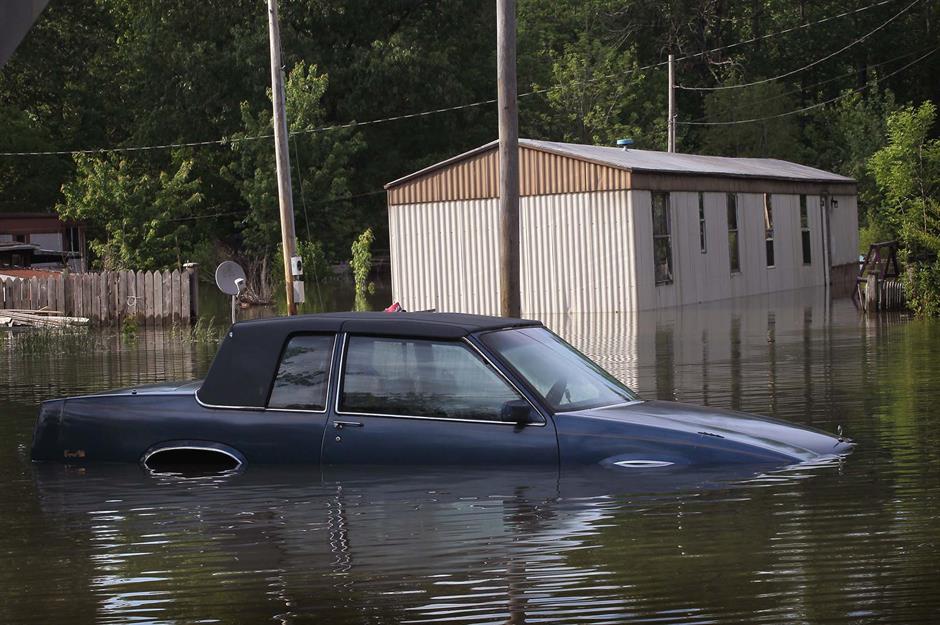
2022: Pakistan floods
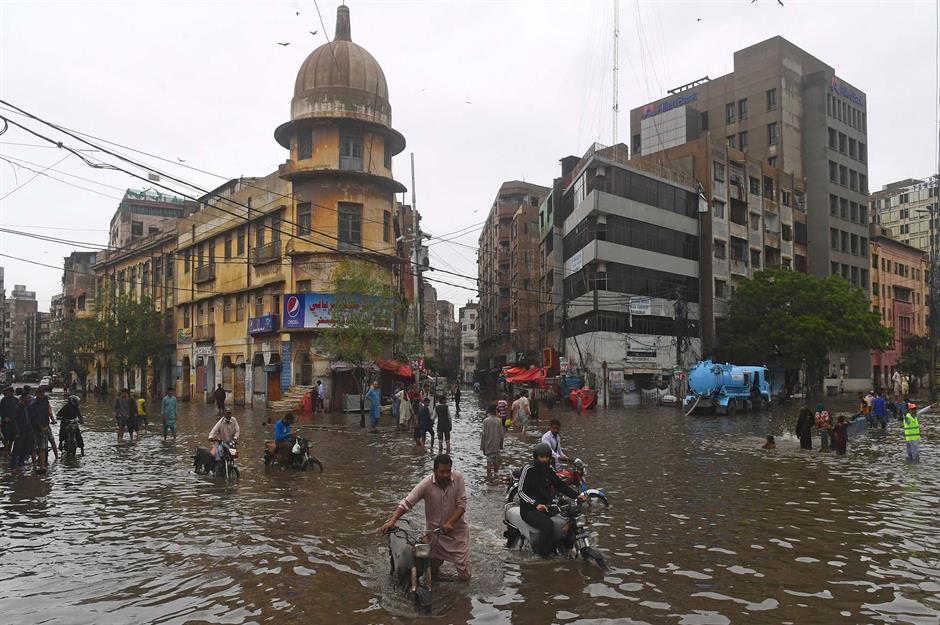
With eight cycles of monsoon rains lashing Pakistan this summer, the country has been battling relentless flooding that has already claimed over 900 lives. With thousands left with no food or shelter, Pakistan's Minister for Climate Change said a "humanitarian disaster" is unfolding in the country. Since the monsoon season started in mid-June, around 2.3 million people have been affected and nearly 100,000 homes destroyed.
2022: Pakistan floods
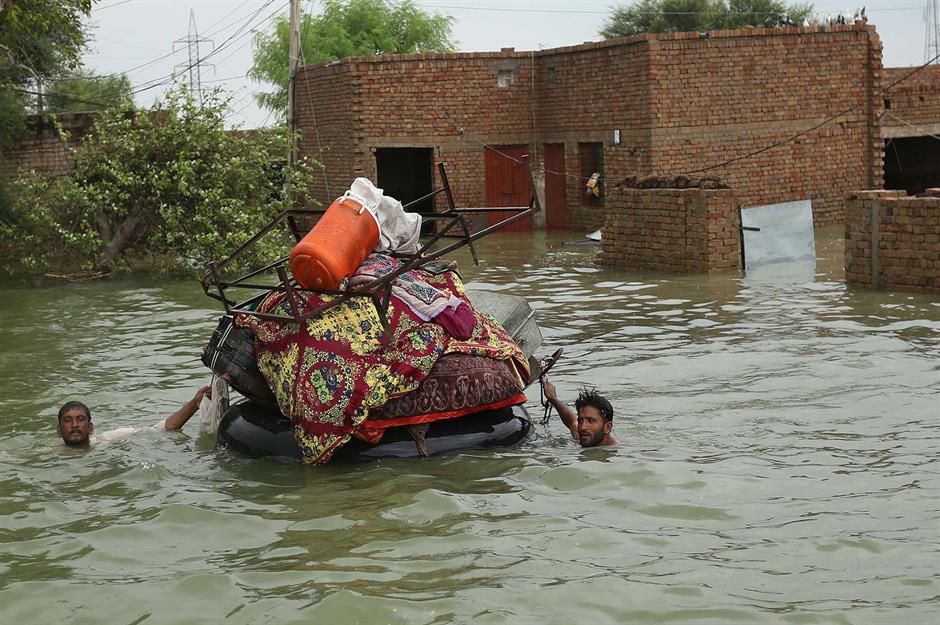
Infrastructure has also been damaged with nearly 2,000 miles (3,218km) of roads and 129 bridges damaged in the affected areas. Although monsoons arrive in the country every year, 2022 has seen 133% more rain than the average for the last three decades. Unprecedented 15 inches (400mm) fell in Karachi over the course of just a few hours in July while the worst affected areas, including Rajanpur district (pictured), Balochistan and Sindh are expecting more rain to arrive within a week's time.
2022: Nigeria floods
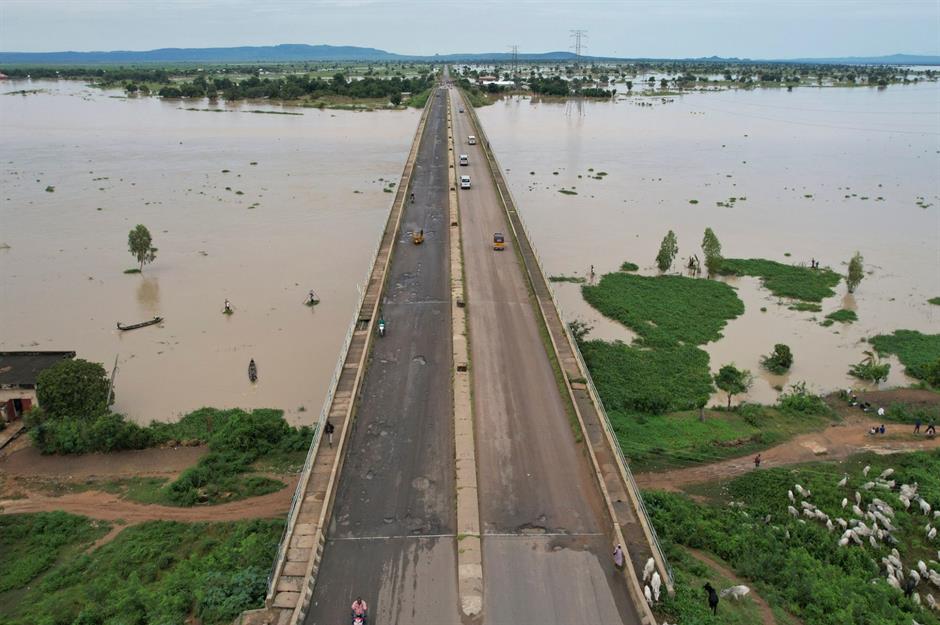
In October 2022 Nigeria was hit by some of the worst flooding it has seen in a decade. Tragically, the disaster has killed more than 600 people, while 1.3 million have been displaced and more than 200,000 homes have been completely or partially damaged. The country's National Emergency Management Agency warned of catastrophic flooding earlier in the month, warning that it expected three of Nigeria's overfilled reservoirs to spill over, and that states along the Niger and Benue rivers would be hit.
2022: Nigeria floods
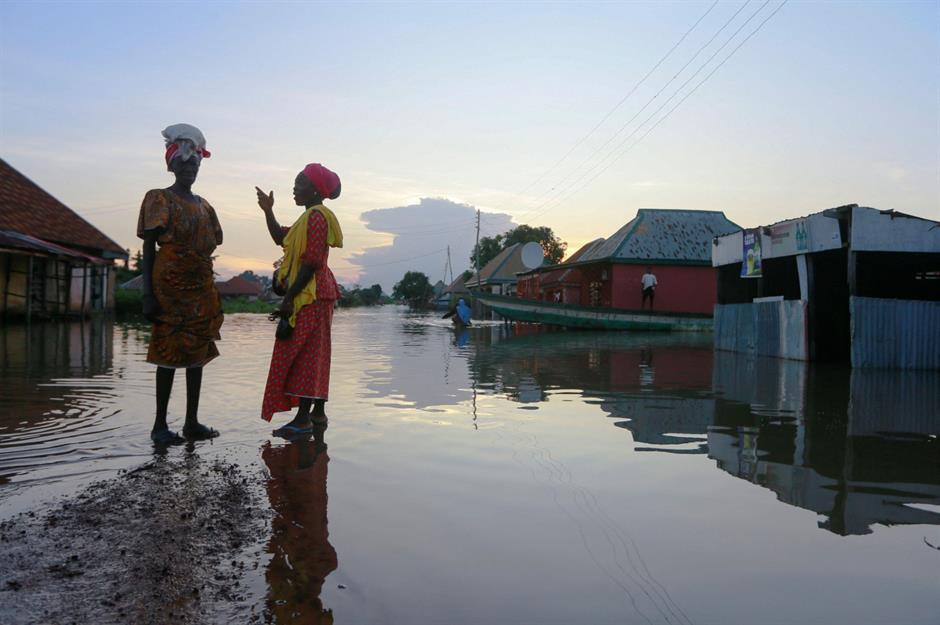
Many parts of the country are prone to annual floods, but this year's events are more severe than the last major deluge in 2012, according to Red Cross officials. Large expanses of farmland have been destroyed, while concerns have been raised about the spread of water-borne diseases and the disruption of food and fuel supplies as a result of flooding. This comes one month after the UN warned that Nigeria was among six countries worldwide facing catastrophically high levels of hunger.
2022: Venezuela floods
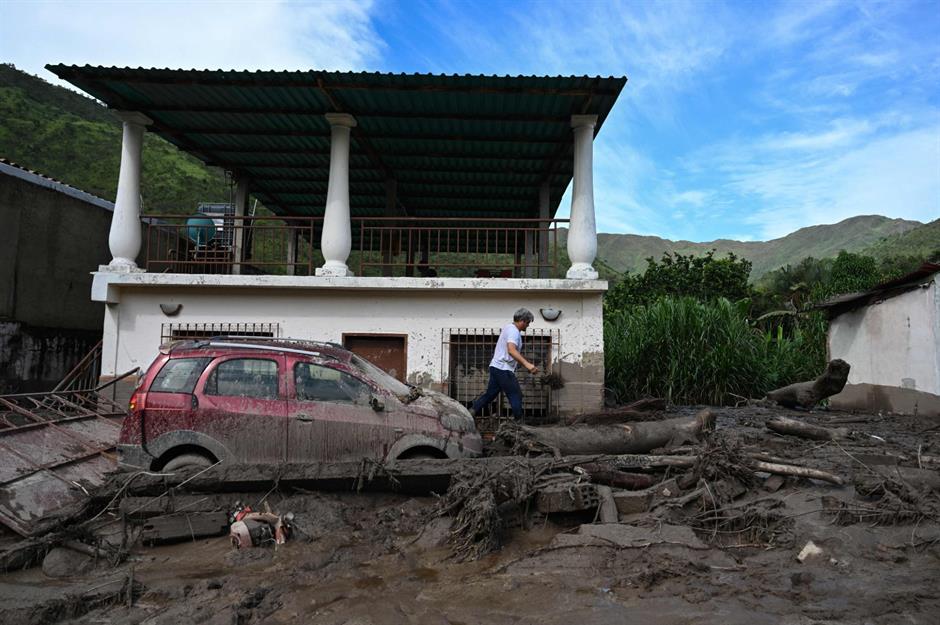
In October 2022 Venezuela was devastated by an almost unprecedented deluge of rainfall. On 8 October, a whopping 35 days' worth of rain fell on the town of Las Tejerias in a single day, causing mudslides which tragically killed 54 people. Then on Monday 17 October, three people died after flooding in the central state of Aragua caused a dam to overflow, resulting in a landslide. The military has mobilised 2,800 soldiers to help the region deal with fallout from the flooding, which has been linked to the climate crisis.
2023: Turkey floods
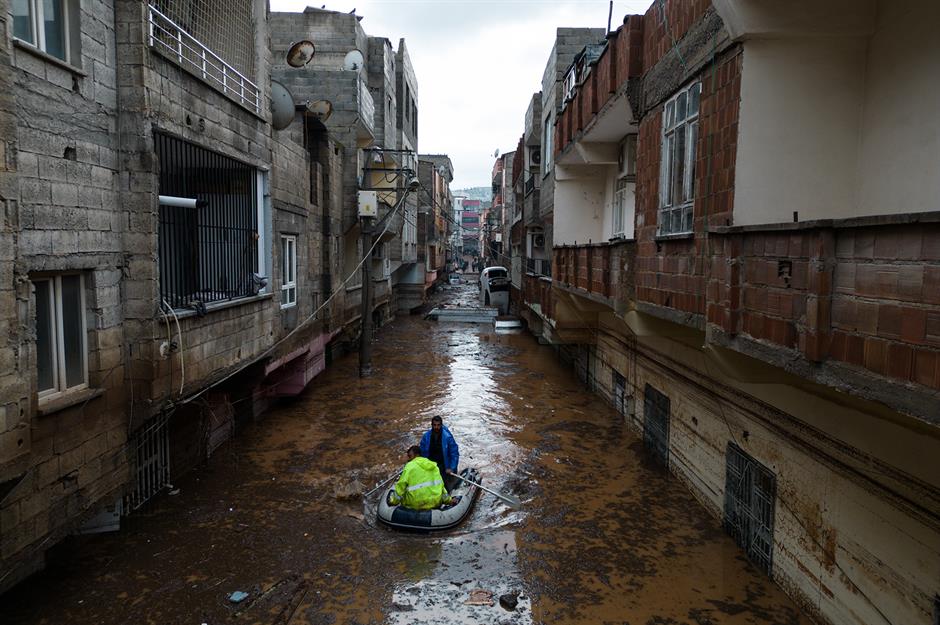
After a catastrophic sequence of earthquakes in southeastern Turkey in February 2023 left more than 50,000 people dead, torrential rain hit the recovering provinces of Sanliurfa and Adiyaman just a few weeks later, causing damaging flash floods. Water washed away cars and temporary shelters for earthquake survivors, covering the area in mud and debris. 16 people lost their lives in the flooding and professional divers were sent to aid rescue efforts, while thousands of earthquake-hit buildings were further damaged by the rising water.
2023: Libya floods
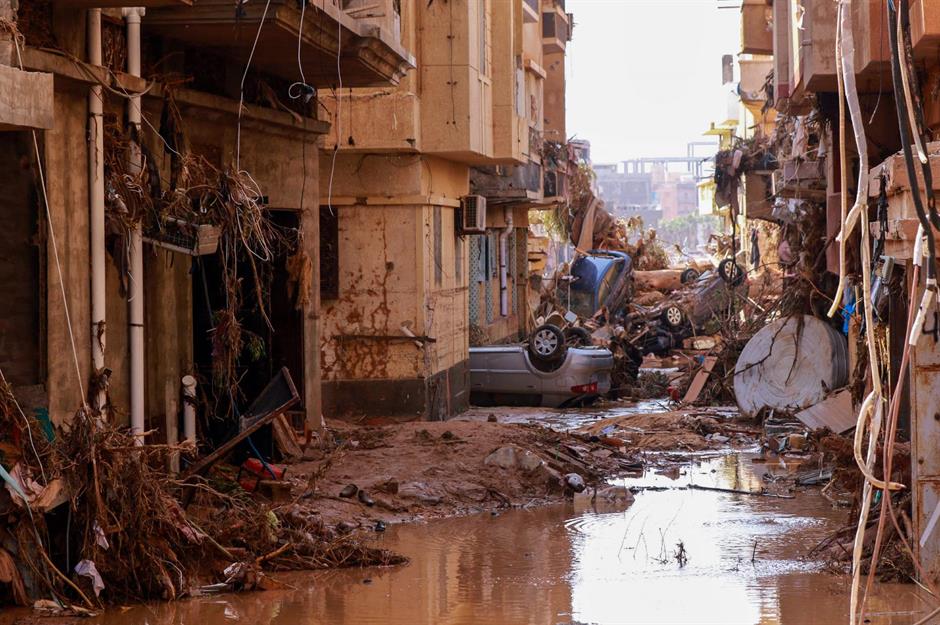
With the death toll still rising, at least 6,000 people are currently known to have been killed and a further 10,000 are unaccounted for after flash floods ripped through northeast Libya on Sunday 10 September 2023. The deluge came when Storm Daniel hit the Mediterranean port city of Derna and the surrounding areas, causing whole neighbourhoods to be swept away, dams to collapse and buildings to crumble. Here, overturned cars and other debris can be seen lining a Derna street in the aftermath of the disaster.
2023: Libya floods
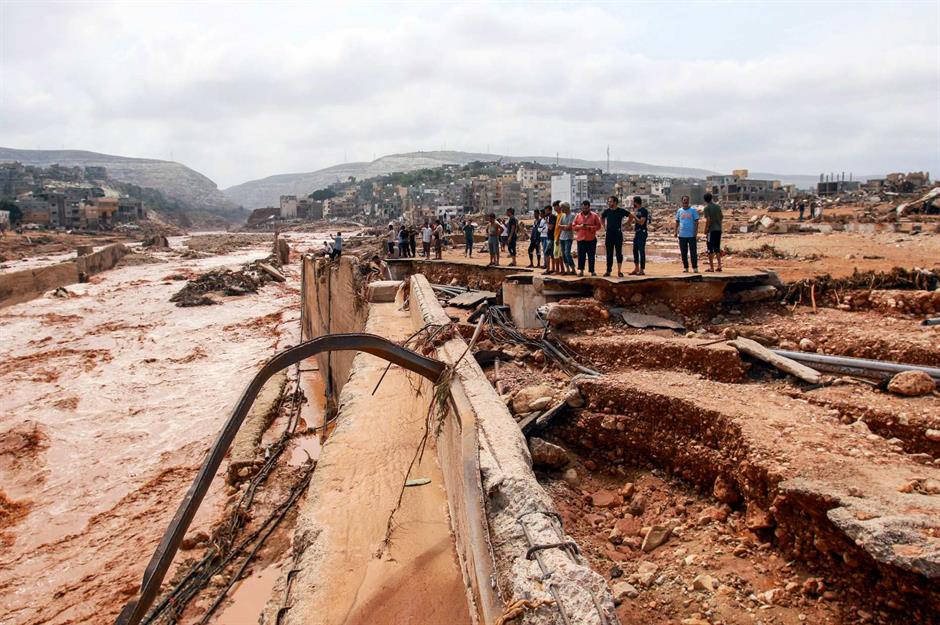
As Libya continues to count the cost of the tragedy, terrible stories of loss are emerging. On 13 September, it was reported that among the dead are four footballers who played for two of the country’s Premier League clubs and their youth teams. Another of the victims is a Palestinian refugee who fled Lebanon for Libya 30 years ago with his wife and daughters, whose lives were also taken by the floods. With more than 30,000 people now facing homelessness, this latest catastrophe is being called the worst climate disaster of 2023 so far.
Now read on for extreme weather records broken recently due to the climate crisis
Comments
Be the first to comment
Do you want to comment on this article? You need to be signed in for this feature